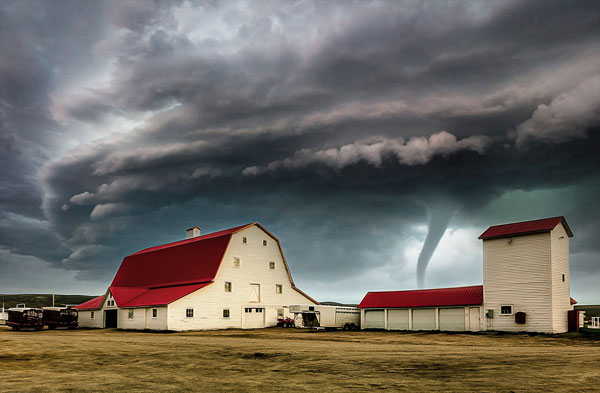Research shows tornado activity shifts as “Tornado Alley” expands eastward

[Tornado Alley. Photo Credit to Pixabay]
Researchers from the City University of New York and other institutions have observed a gradual shift in tornado activity over the past few decades, challenging long-held assumptions about America’s most tornado-prone regions.
For decades, the term "Tornado Alley" has conjured images of violent twisters tearing across the Great Plains of the United States, particularly in states like Texas, Oklahoma, Kansas, and Nebraska.
These states have long been recognized as the most tornado-prone area in the world, thanks to the unique meteorological conditions that allow cold, dry air from Canada to meet warm, moist air from the Gulf of Mexico.
The result is the development of supercells - large, rotating thunderstorms capable of spawning highly destructive tornadoes.
However, recent studies indicate that Tornado Alley might be on the move.
While tornadoes are still common in the traditional Tornado Alley, their frequency is decreasing.
Meanwhile, the southeastern United States, an area dubbed "Dixie Alley," is experiencing an increase in tornado outbreaks.
States like Alabama, Tennessee, and Kentucky are now seeing more frequent and severe tornadoes.
This shift became particularly evident on June 15, 2023, when a powerful tornado struck Perryton, Texas, injuring 75 people and killing three.
While such events are not unusual in Texas, the increasing frequency of tornadoes in places like Alabama and Michigan, which experienced its first-ever tornado emergency in May 2024, suggests that Tornado Alley is expanding.
The causes of this shift are still under investigation.
Some scientists hypothesize that localized factors, such as warmer temperatures and the influence of hurricanes, could play a role.
Others wonder if climate change is contributing to the changing patterns.
Tornadoes thrive on warm, humid air, and as global temperatures rise, tornado-prone areas may continue to shift.
Supercells, the storm systems responsible for most tornadoes, are still not fully understood.
These towering storm clouds occasionally form rotating columns of air that can evolve into tornadoes, but the precise mechanisms behind this process remain a mystery.
As climate change continues to alter weather patterns, the frequency and intensity of supercells—and the tornadoes they produce—could change in ways that scientists are only beginning to understand.
The implications of this shift are significant.
Traditionally, homes and infrastructure in Tornado Alley have been built with tornadoes in mind.
Basements, storm shelters, and reinforced buildings are common in these areas.
In contrast, much of the southeastern United States is less prepared for such extreme weather.
As tornadoes become more frequent in these regions, there could be an increase in damage, injuries, and fatalities.
As tornado patterns continue to shift, meteorologists and emergency management officials are urging communities across the United States to reassess their preparedness strategies.
Dr. Jane Smith, lead researcher at the National Severe Storms Laboratory, emphasizes the importance of public awareness, stating, “We need to broaden our understanding of where tornadoes can occur. It’s no longer just about ‘Tornado Alley’ - every state needs to be prepared.”
Local governments in the Southeast are already taking action.
Alabama has increased funding for storm shelters by 30% over the past two years, while Tennessee has launched a statewide tornado drill program in schools.
As research progresses, one thing remains clear: the changing face of Tornado Alley demands a nationwide reevaluation of severe weather preparedness.

- Geonwoo Kim / Grade 11
- North London Collegiate School Jeju

![THE HERALD STUDENT REPORTERS [US]](/assets/images/logo_student_us.png)
![THE HERALD STUDENT REPORTERS [Canada]](/assets/images/logo_student_ca.png)
